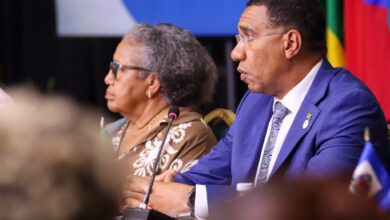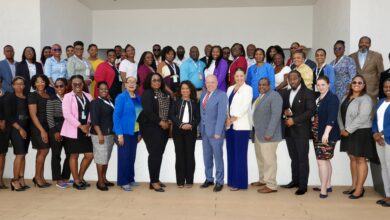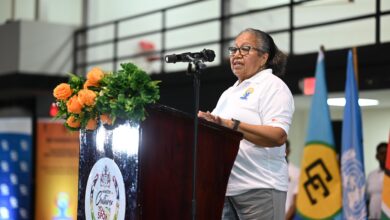KINGSTON, Jamaica, Wednesday November 25, 2015 – The Caribbean is being told it can build on the gains of its HIV responses to end AIDS as a public health threat, if it follows a new strategy created by the United Nations’ Joint United Nations Programme on HIV/AIDS (UNAIDS).
A new global HIV report released yesterday ahead of World AIDS Day, ‘Focus on Location and Population’, demonstrates the value of targeting the people and places with the highest HIV risk as part of an approach to dramatically reduce HIV transmission, through the UNAIDS Fast Track Strategy.
At the centre of the strategy is new science which shows that early and full HIV treatment reduces the risk of HIV transmission by 96 per cent. The next five years present a window of opportunity to scale up HIV testing and treatment. The new 2020 targets adopted by the region are known as 90-90-90. Specifically, countries will aim to ensure that 90 per cent of people living with HIV know their status; that 90 per cent of those diagnosed with HIV are placed on treatment and that 90 per cent of those on treatment achieve viral suppression – that is, a level of HIV in the blood that is so low that health outcomes improve while the risk of transmission dramatically declines.
“The Caribbean can achieve these ambitious targets. Since 2000, new infections in the region declined by 50 per cent. In the last 10 years alone, the Caribbean achieved a 61 per cent reduction in AIDS-related deaths. Additionally, following the success of Cuba, several Caribbean countries are on track to be validated as having eliminated HIV transmission from mothers to children by 2016,” UNAIDS said.
“All these gains are linked to improvements in HIV testing and treatment. Based on the new World Health Organization guidelines for initiating patients on antiretroviral medicines immediately after diagnosis, treatment coverage for the region is 44 per cent for adults living with HIV and 36 per cent for children. By scaling up efforts to test and treat, the 90-90-90 targets are achievable.”
The new UNAIDS report emphasizes that in order to dramatically reduce new HIV infections and deaths due to AIDS, there must be renewed efforts to eliminate stigma and discrimination. It said strategic efforts are required to reach those who are most vulnerable, where they are.
The report identifies five groups relevant to the Caribbean that require intense investments and efforts – adolescent girls and young women, gay men and other men who have sex with men, transgender people, sex workers and prisoners.
During his mission to the region earlier this month, UNAIDS Executive Director Michel Sidibé stressed the importance of addressing not only the prevention and HIV treatment needs of girls, but also the need for increasing social protection. Education, keeping girls in school and addressing gender-based violence are all key ingredients to reducing the disproportionate HIV risk borne by girls.
Young women in the Caribbean are two to three times more likely to be living with HIV as young men. This is partially explained by the early sexual debut among young women in the Caribbean and the prevalence of intergenerational sex involving younger females and older male partners.
“We need to ensure that our programmes can reach girls where they are and address their concerns. That is not resolved with pills. The problem is structural. We need to have courage to remove boundaries . . . make sure people should no longer accept gender inequality or the social construction that if I am the man I can abuse women as I want,” Sidibé said.
Targeted efforts are also needed to address key populations. HIV rates among men who have sex with men vary throughout the region but are well documented to be between six and 20 times higher than that of the general population.
“Those groups are very vulnerable,” the top UNAIDS official said. “We know that when we discriminate they will hide themselves and they will not have access to services. Some of them will have relationships with women and infection goes on to the general population. Justice for all is key if we want to achieve the goal of breaking backbone of the epidemic.”
Sidibé urged increased investments and collaboration with civil society and the faith-based community aimed at reducing prejudice and providing services to hard-to-reach communities.
“It is very clear that the traditional service approach will not work. We need to bring all these partners around the table. We will never reach all people where they are if we do not reduce stigma and discrimination. There is no way to do it without compassion . . . without realizing that any life lost because people do not have access to services is unacceptable,” he said.






